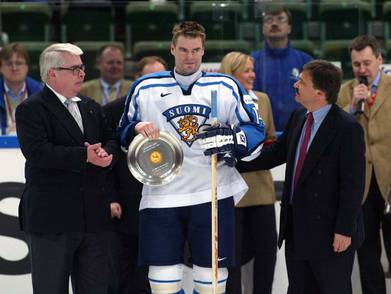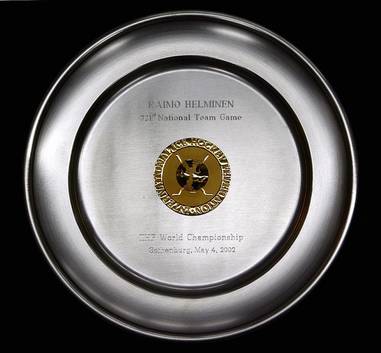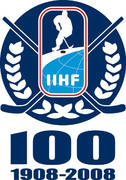

Story #58 Raimo Helminen, 38, dresses for a sixth OlympicsFebruary 15, 2002 — Salt Lake City, Utah
There may have been better players, players with a harder shot, players who could skate faster or score more often, but no player in hockey history represented his country more often than Finland’s Raimo Helminen. From his debut with the senior team in 1984 to his last hurrah in 2003, Helminen played some 330 times, none more important than in Salt Lake City, Utah, for the 2002 Olympics, his sixth Olympics. Helminen became the first hockey player – and only the sixth winter Olympian overall – to record six five-ringed tournaments. It was an achievement which was recognised in virtually all world-wide sports media. The IIHF also made Helminen the cover boy of the official Olympic Media Guide for Salt Lake City.  Along the way, Helminen won nine medals for his country, two of which in particular stand out. He played for Finland at the 1988 Olympics in Calgary, Canada, when his country won a silver medal, the first hockey medal for Finland going back to the country’s debut appearance in 1952.  About the Top 100 StoriesAs part of the IIHF's 100th anniversary celebrations, www.IIHF.com is featuring the 100 top international hockey stories from the past century (1908-2008). Starting now and continuing through the 2008 IIHF World Championships in Canada, we will bring you approximately three stories a week counting down from Number 100 to Number 11.
The Final Top 10 Countdown will be one of the highlights of the IIHF's Centennial Gala Evening in Quebec City on May 17, the day prior to the Gold Medal Game of the 2008 World Championship.
These are the criteria for inclusion on this list: First, the story has to have had a considerable influence on international hockey. Second, it has to have had either a major immediate impact or a long-lasting significance on the game. Third, although it doesn't necessarily have to be about top players, the story does have to pertain to the highest level of play, notably Olympics, World Championships, and the like. The story can be about a single moment — a goal, a great save, a referee's call — or about an historic event of longer duration — a game, series, tournament, or rule change. |
 Click here for the 100 Top Stories
|
|






